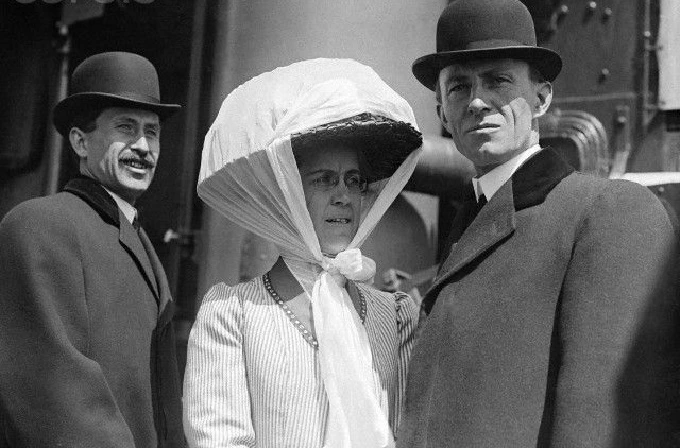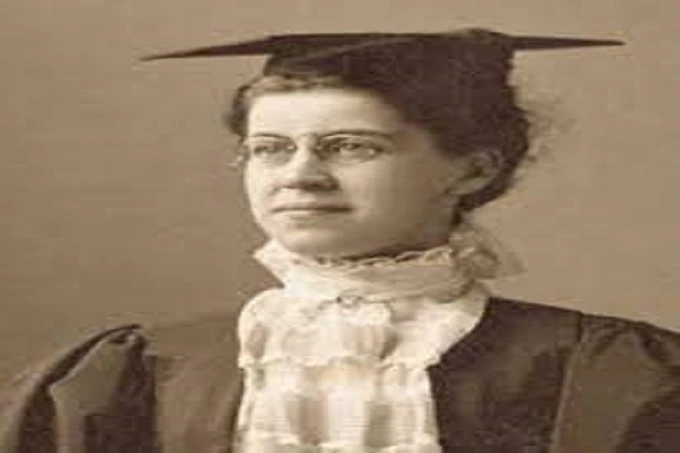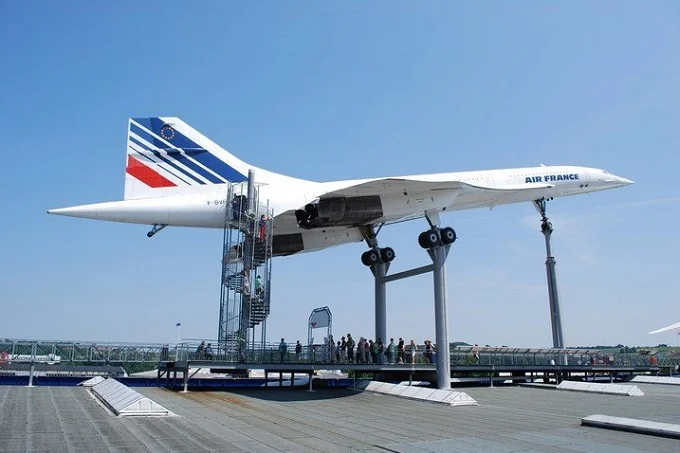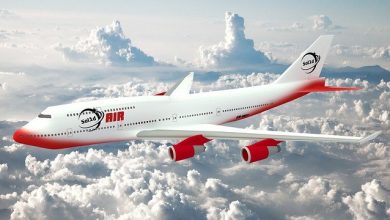Katharine Wright: the story of the woman who helped the first plane to take off

The Wright brothers are widely credited with developing the first airplane. They founded a company that still operates today (after merging with a competitor). However, the brothers’ imaginative work and company may be held due to a lack of financial resources and pathological shyness. Because they had a sister, Katharine Wright, this did not happen.
The Wright brothers’ Flyer 1, created by Wilbur and Orville Wright, made its first flight on December 17, 1903. They are remembered as the first aviators to achieve controlled flight in heavier-than-air powered aircraft. While the brothers aspired to the sky, their sister took care of their worldly affairs.

On August 19, 1874, Katharine Wright was born. Katharine’s mother died of Tuberculosis in 1889, and as the only female in the family, she was forced to take over the home. She maintained a home in Dayton, Ohio, where she lived with her father and four brothers while continuing her education: she graduated from high school. She enrolled at Oberlin College (one of the few at that time where women were admitted). True, Katharine had to put her studies on hold during her first year to care for Orville, who had contracted typhoid sickness. She playfully referred to him as “little brother” while spending days by his bedside, despite being three years older.
Almost all of Katharine’s courses came easy to her, save mathematics, which she had to study three times a week with Henry Haskell, who was two years her senior. She graduated from Oberlin College in 1898 and began teaching Latin the following year, when she “cut many of the future leaders of Dayton in the test,” as Orville quipped in one of her letters. “There were usually five or six bullies in my class,” Katharine, who became the mistress of her brothers’ home at the age of 15, said of inadequately industrious classmates. “I was prepared for this and extinguished out their humor,” she said to her father in a letter.
Katharine Wright was Milton and Susan Wright’s only graduate. Wilbur and Orville were already working on their planes at the time, motivated by the success of other aviators.
Rise and fall

Many aviation enthusiasts attempted to perfect controlled flight during the “Era of the Pioneers.” The answer to this issue included not just complicated mathematics but also several experiments, some of which failed. For example, famous aviator Otto Lilienthal crashed in 1896 while testing a glider of his own design. The Wright brothers were stunned by the incident, but it did not deter them from pursuing their dream of flying. They traveled to Kitty Hawk, North Carolina, to perform their own experiments.
Money was necessary for moving, living in a strange place, constructing models, and testing them. Their source was Katharine’s family company, a store, and a bicycle repair shop. She oversaw the employees, handled the bills, and made the business successful, allowing Wilbur and Orville to continue their research in the United States and Europe. Katharine Wright’s bike store was their main source of revenue in the absence of private investment and government support. She adored riding a bicycle and paid little regard to those who thought it was inappropriate for women to do so.
The brothers received a patent for the world’s first internal combustion engine airplane in 1906. Katharine took over as executive secretary and began communicating with companies that could be interested in the new aircraft. She replied to press queries, reviewed business offers, and politely declined “city madmen” who proposed wild collaboration ideas. All of this while still teaching high school.
Wilbur and Orville had two contracts by 1908, one with a group of French financiers and the other with the US Signal Corps. Wilbur travelled to France for demonstration flights, while Orville went to Fort Myer near Washing ton. The propeller failed a few minutes after takeoff on September 17, 1908, and the aircraft fell. Lieutenant Thomas Selfridge, the passenger, was killed. Orville Wright was gravely hurt and had to return to the hospital. Katharine quit the company and travelled from Ohio to care for her brother, as she had done many years before.
She visited him in the army hospital for seven weeks, chatting with physicians, receiving guests, and responding to letters. Katharine took a vacation, which she subsequently prolonged, but she never returned to school. Her life’s major business was now aviation. Katharine was instrumental in convincing the Signal Corps to retain the contract despite the catastrophe that happened during the demonstration flight.
Manager of Public Relations
Katharine and Orville travelled to France in 1909, where Wilbur awaited them. The crowd was taken aback by the brothers’ flights, but they were not the kind of making connections easily. According to the Oberlin Alumni Magazine, they are “not the type of man you want to take to dinner,” according to the Oberlin Alumni Magazine. You can see them coming without saying anything.” So, in 1901, Octave Chanute, a well-known engineer and international authority on the subject of aeronautics, requested Wilbur to speak to the Western Society of Engineers, but he declined to owe to shyness. Katharine urged him to reconsider.
Their sister was as outgoing and social as their cautious and shy brothers. “Coal-black hair, deep blue eyes, and a stunning grin,” one of the aviators trained to fly by her brothers once said. Katharine got along well with everyone, even the royals: she once forgot how to curtsy and welcomed King Alfonso XIII of Spain with a handshake, which knocked the king out.
Katharine learned French to represent the boys in France. After two hours of courses, she travelled to the airport to speak with members of the royal families, governments, and troops. She took part in demonstration flights as a passenger when King Edward VII of England raised doubts about the dependability of supposedly frail aircraft. The Aéro-Club de France welcomed Katharine Wright to a dinner party (she was the first woman to cross its threshold), and the government awarded all three Wrights the Legion of Honor.
They were all celebrities when they returned to America. The President awarded them medals, and a crowd of media greeted them in their hometown of Dayton. Henry Haskell, a reporter for the Kansas City Star, was one of them, and he had previously assisted Katharine with her mathematics.
Rights of women and intellectual property

Katharine was passionate about more than simply flying. She was one of the Women’s Suffrage March organizers in 1914. There were 1300 people in attendance, including Katharine and Orville’s father.
“I spent Wednesday going to Columbus (a city in Ohio) to be there in the Senate when they voted and approved a law granting women the right to vote in presidential elections,” she said in a letter in 1917. The loss was not well received by “anti,” who think that “a woman’s place is in the home,” and alcoholics. The saloon’s proprietor, O’Brien of Cincinnati, made the most credible argument against it.” In 1919, Ohio passed the 19th Amendment, granting American women active suffrage.
Wilbur was already dead at that time, and Katharine was certain that patent battles with Glenn Curtiss, who used Wright’s inventions in his aircraft, had driven him to death. The Smithsonian Institution became embroiled in the debate after asserting that one of its employees, Samuel Langley, created the first aircraft (in fact, he could not conduct successful tests). Countless courts acknowledged the Wrights’ supremacy and the Langley’s supremacy, which Curtiss exploited. Katharine became an outspoken supporter of intellectual property rights, writing in 1915, “Before I quit this profession, the Smithsonian Institution must be revealed for its complicity in this deception.” The Wright and Curtis firms united in 1929 to become the Curtiss-Wright Corporation.
Harry Haskell, who was still working for the paper and writing stories on the Wrights, proved to be an unexpected friend in the Wrights’ patent battle. When he was widowed in 1923, Katharine sent him condolence letters, and the mutual affection of old friends grew into love. Katharine was not, in fact, free. Orville grew more dependent on his sister after Wilbur’s death since he could not converse with others due to pathological shyness. She had to handle all of his business and communications and his daily routine and domestic responsibilities. When Katharine, 52, married Haskell in 1926, Orville was so offended by his sister that he discontinued their relationship. He didn’t show up for the wedding.
Katharine suffered pneumonia two years after her marriage. Katharine’s other brother, Lorin, had trouble convincing Orville to pay her a visit. He was there when she passed away in 1929.




